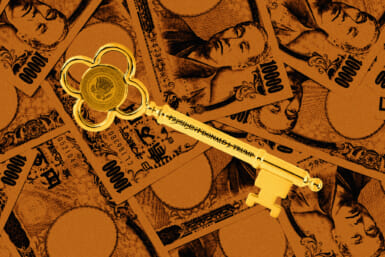Penguins, emerging from various conference rooms, waddled in a stately parade along the corridor. They reached the top of the stairs and stopped. Milling about, they rubbed shoulders and gently bounced off each other as they shifted from foot to foot.
It was an impressive group. Oh, it could be argued that as individuals the creatures presented to the world a certain…sameness, but that was only on the surface. Close observers knew otherwise. And, of course, among themselves they recognized each other.
Sounds, it is said, are identifying characteristics in an otherwise homogenous group. Vocalization is not solely determined by anatomical traits. Passion and pressure vary pitch and tone. Then there are the smells. While diets may be identical—fish, essentially—the timing of ingestion affects the state of digestion that, in turn, dictates the incidence of egestion. A loudly spoken “Awk”—head held high—creates a distinct aroma depending upon where in the process the speaker’s internal system is laboring.
And the visual clues close observers employ may be subtle, but with experience significantly distinctive. Some penguins are taller. (And some are, remarkably, shorter.)
Some penguins, as time goes by, lose head feathers. They then contrive intricate coiffeurs to divert attention from their shamefully bald noggins. Others touch up fading tones so as to replicate the ebony and ivory of youth (highlighting by contrast the aging wrinkle of beak and bark).
Flashbulbs popped. Reporters questioned. Onlookers fawned. The penguins bobbed back and forth as heat and light increased animation. All basked for precious moments in the attention and adulation. It was a black-and-white ball wrought large (as it should be) and in public (where it should be).
Penguin Number 1 (the Leader) finally decided it was time to descend the stairs. He curtailed his wobbling and shuffled to the brink. Others scuttled into position behind him—penguins Numbers 2 through 9 making certain they were close at hand and, more importantly, still in the picture. The first step is a big one. (And so are, as in the case of penguins, all others.) Long-waisted (to accommodate special intestines) and short-legged, the little fellas struggle mightily going from one plane to another.
The Leader stumbled. A number of surprised “Awks” filled the air. Penguin Number 2 raised a flipper, as did Penguins Numbers 3 and 4. The Leader could not retain his balance. Flapping ineffectively, he began to tumble—black over white, black over white. (Insert favorite nun joke here.)
Penguins Numbers 2 through 7 began to go after the Leader. Penguin Number 8 turned to a reporter. Penguin Number 9, watching from the top of the stairs, laid—to everyone’s surprise—an egg.
“It’s me, it’s me” awked Penguin Number 2. He had caught up to the Leader half-way down. “He said, ‘Help,’ which means he wants me to take his place.” The Leader, meanwhile, was still in the black-over-white, black-over-white phase.
Penguins Numbers 3 and 4 ceased hopping after the careening Leader and were merely…watching. They may have been formulating a plan…actually no. They were merely…watching.
Numbers 5, 6 and 7—who heretofore had been meeting in different conference rooms—began nuzzling each other and smoothing ruffled feathers with long sweeps of their heads over the breasts of their former foes.
At the top of the stairs, Penguin Number 8 turned away from the reporters and gently sat on Penguin Number 9’s egg. Close observers saw this as less an effort toward reconciliation than perhaps an indication that Number 8 was very old, very old indeed. And he had seen it all before.
At the very moment the Leader hit bottom, Penguin Number 5 declared himself “The New Leader.” As penguins go, he had a large, square head. It was not a head that lent itself to aerodynamics, but it did serve to keep him firmly and immovably planted. The head of The New Leader shook gravely at Penguin Number 2’s diminishing cries of “It’s me, it’s me.” Order in the flock, be it new or old, must be maintained. That’s leadership.
Meanwhile, on the ground at the foot of the stairs, The By Now Former Leader looked up at his colleagues. He had tried his best, he thought to himself. He always went to the parties and performances. He showed up on time. He even had a plan or two. He was proof, was he not, that nice guys can become the Leader.
A feather floated down the stairway. One of his? The By Now Former Leader didn’t know. The feather gently settled on his chest. It was nice that his former colleagues left something for him.









